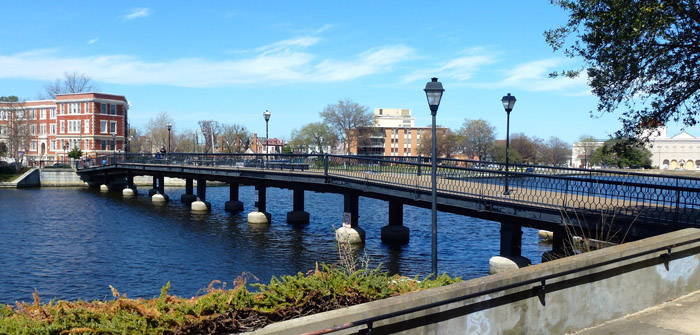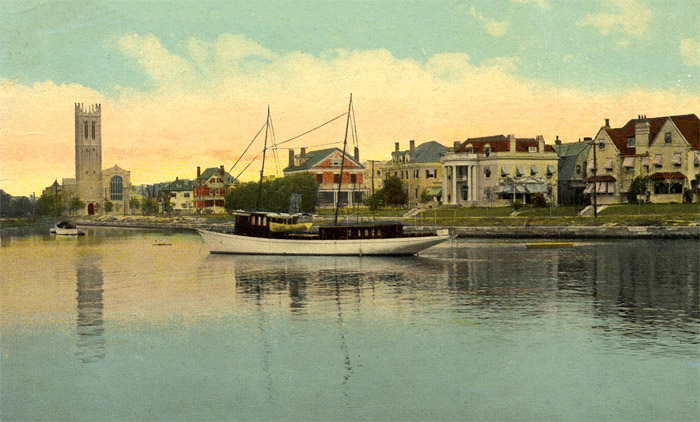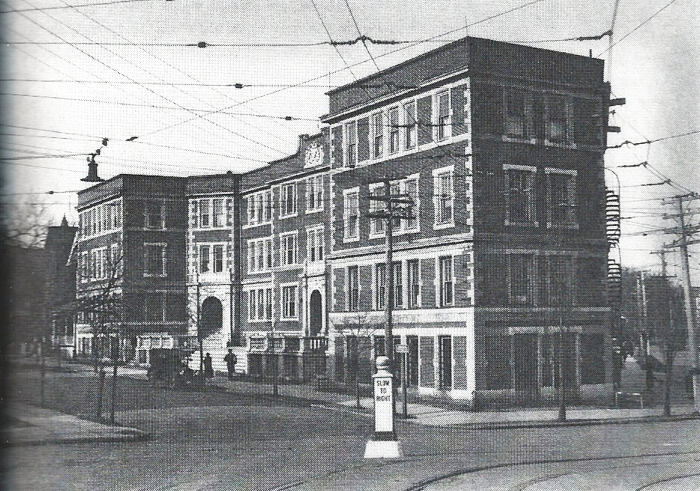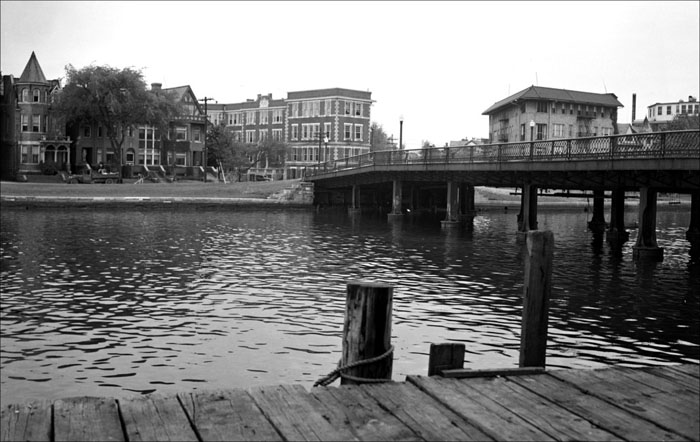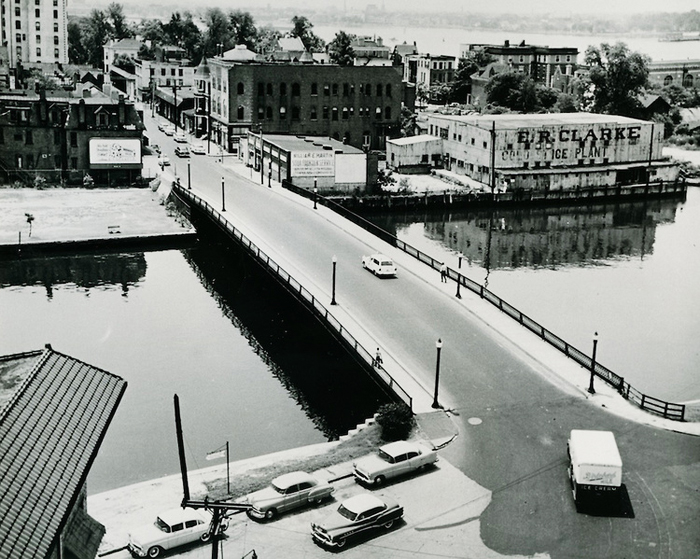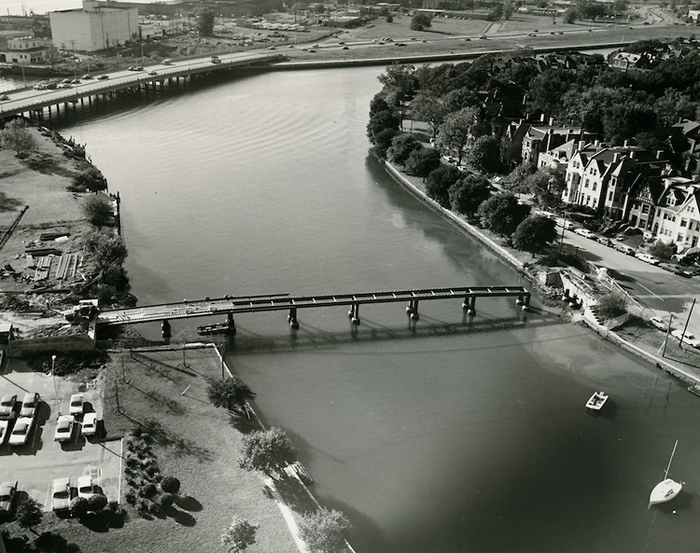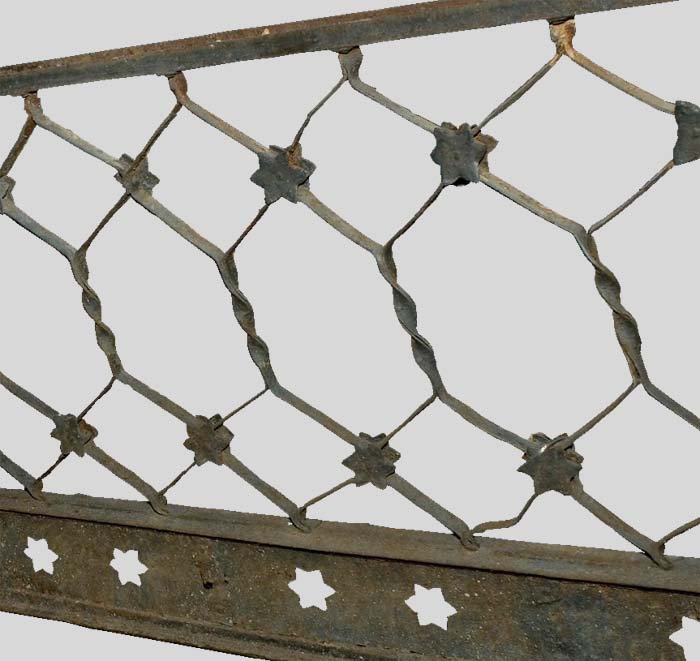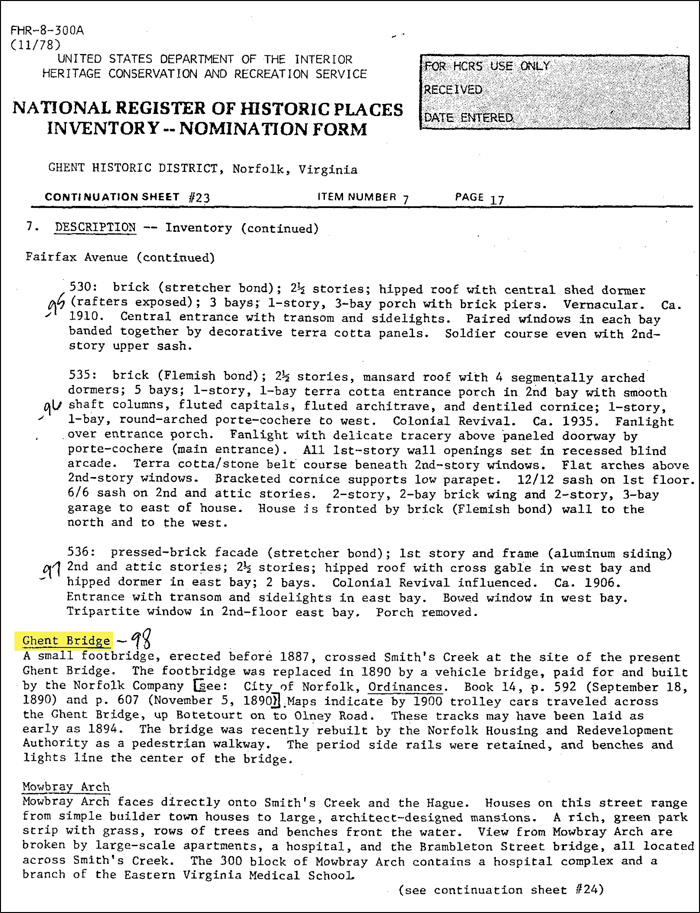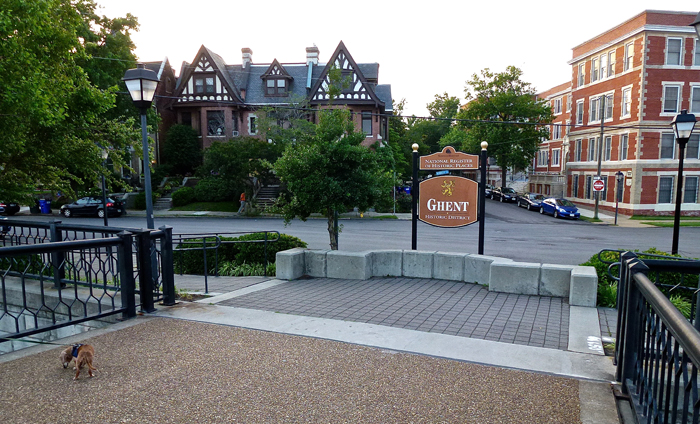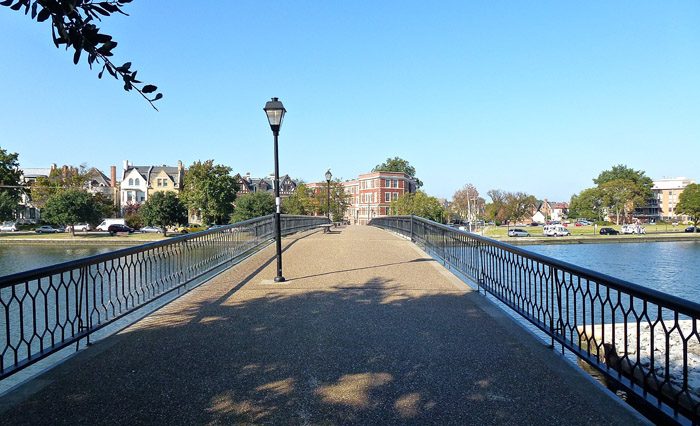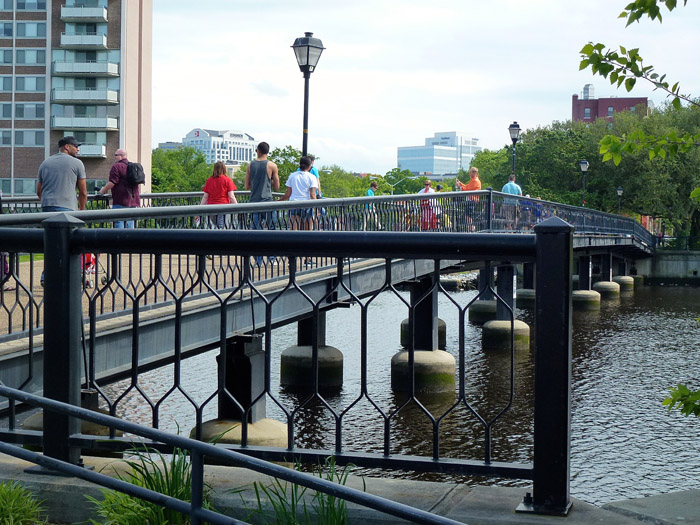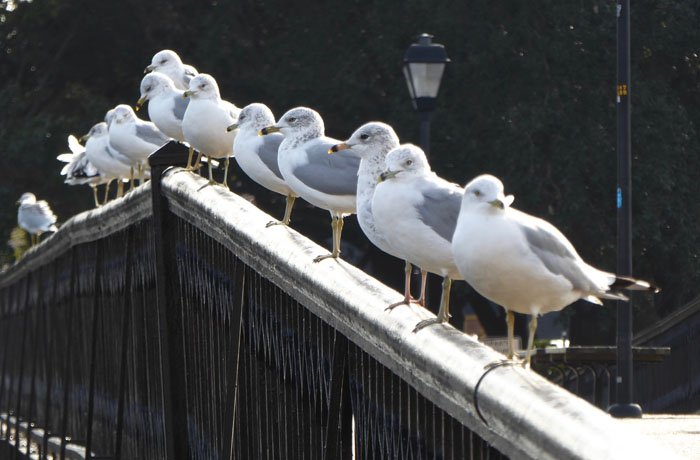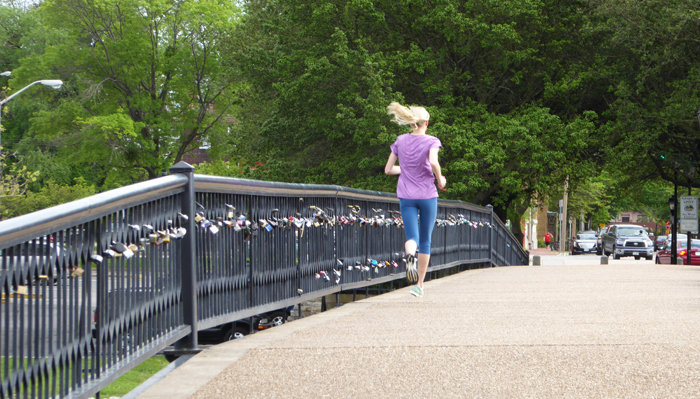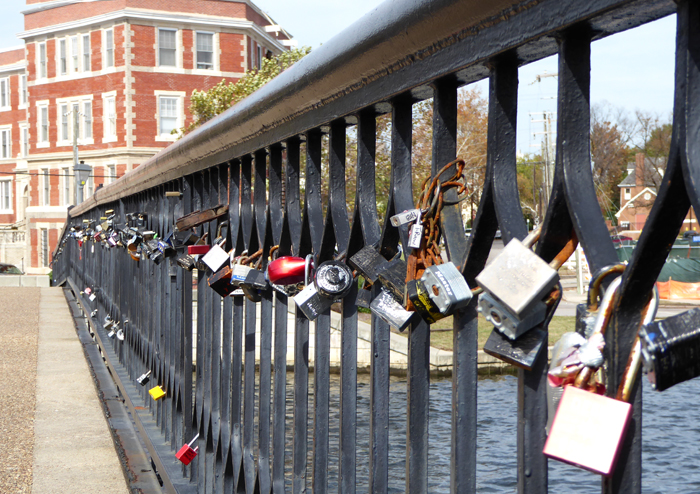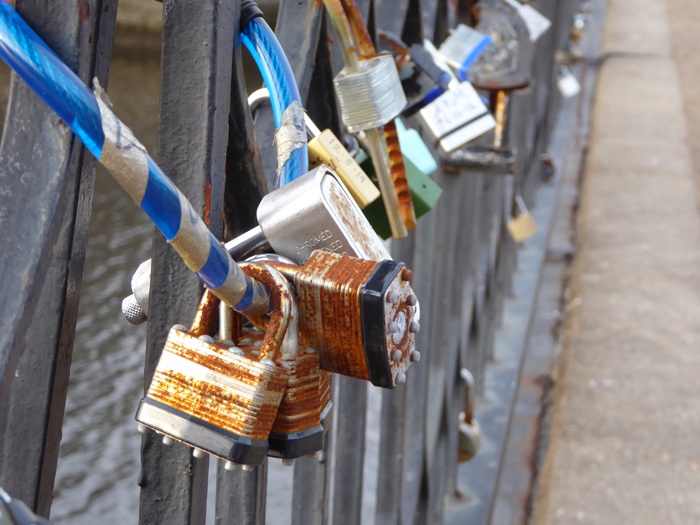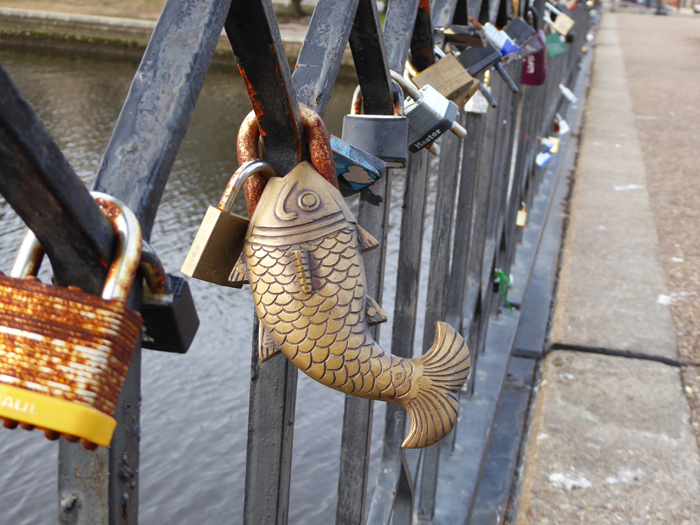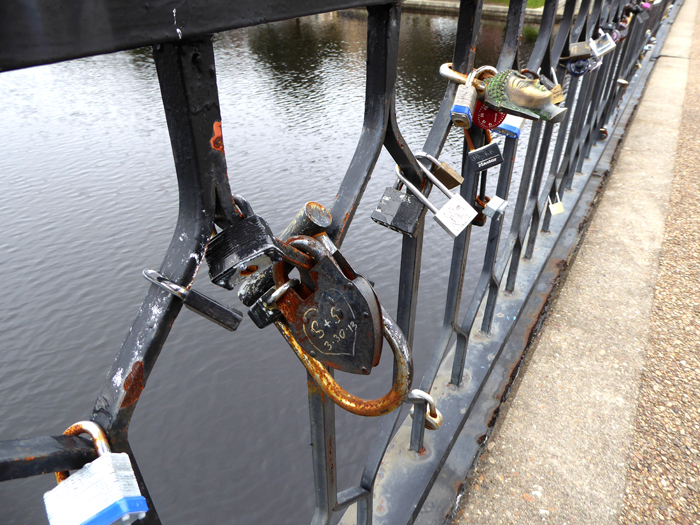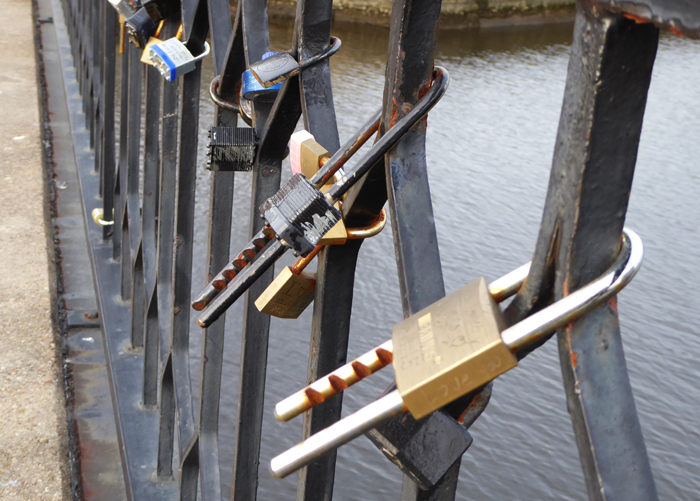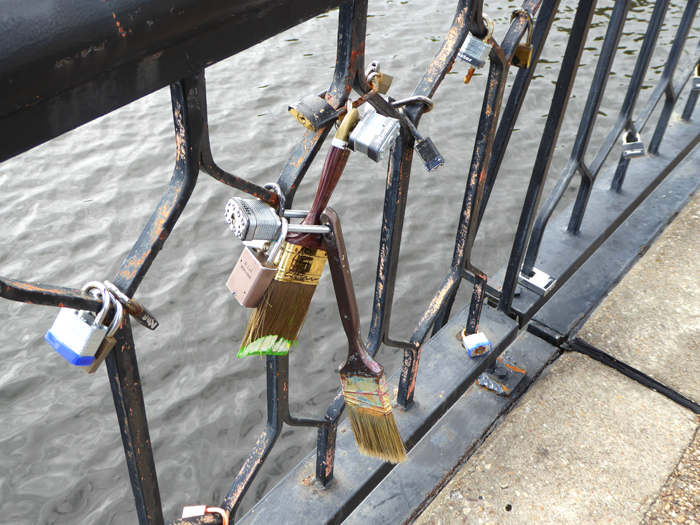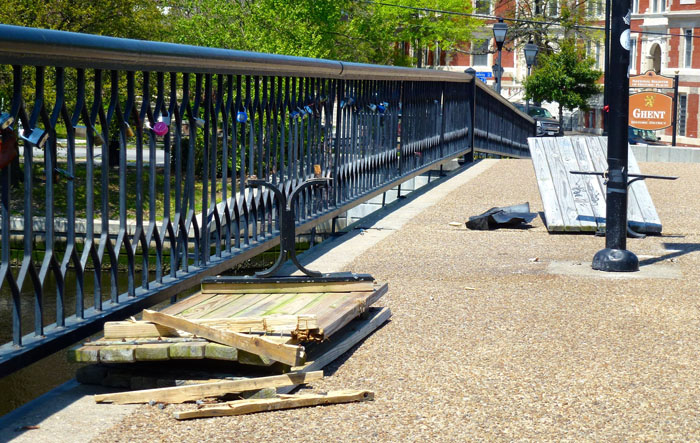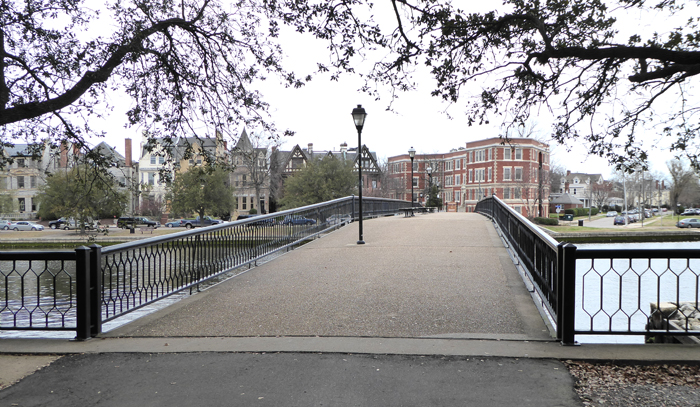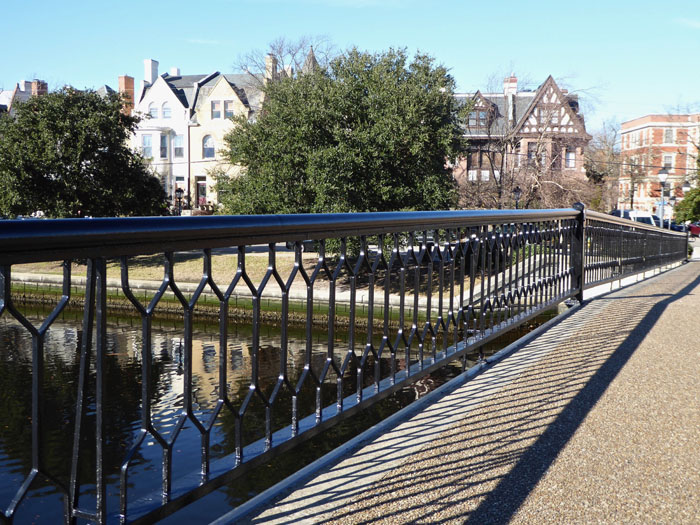History of The Hague Bridge Norfolk, Virginia
In The Beginning... A wood bridge originally connected Norfolk with the plantations on the other side of Smith's Creek. Such a bridge may have existed for some two hundred years. The photo below was taken in 1888, a year before a storm destroyed the old wood bridge:
hague bridge, ghent, norfolk, virginia In 1891 the steel Botetourt Street Bridge was built at the site of the old wood bridge. This was about the same time the western portion of Smith's Creek became known as "The Hague." The new bridge, which was paved with oyster shells, carried vehicular traffic and even streetcars between Norfolk and its new suburb of Ghent. The photo below of the Botetourt Street Bridge was taken in 1895:
hague bridge, ghent, norfolk, virginia The Hague used to be a world-class haven for large sailing yachts going up and down the Atlantic seaboard, back when the turnstile bridge between it and the Elizabeth River allowed large sailing yachts to enter. Despite the protests of boatmen and commercial interests on The Hague, the City of Norfolk decided to build the current low, fixed Brambleton Bridge, and that put an end to the yachts:
hague bridge, ghent, norfolk, virginia Photo of Mowbray Arch taken from the bridge in 1902:
hague bridge, ghent, norfolk, virginia Photo of the bridge, circa 1912, taken from the Freemason area, looking toward Ghent. The bridge was paved at some point for more modern vehicular traffic. Note, too, the streetcar tracks on the bridge with a streetcar approaching the bridge on Botetourt Street, just to the right of the Holland House apartment building (far side of The Hague): hague bridge, ghent, norfolk, virginia This old photo shows the streetcar tracks and cables in front of the Holland House apartment building where they turned off the bridge to proceed up Botetourt Street:
hague bridge, ghent, norfolk, virginia Circa 1940:
hague bridge, ghent, norfolk, virginia Photo of the bridge in 1956. The streetcar tracks have been removed. In 1963 automobile traffic was discontinued on the bridge too. Only pedestrians and bicycles henceforth:
hague bridge, ghent, norfolk, virginia
The Lookalike Replacement Pedestrian Bridge In 1976 the bridge was replaced with a new, narrower pedestrian bridge that incorporated parts from the older bridge and maintained the historical bridge's general appearance.
hague bridge, ghent, norfolk, virginia Section of the 1891 bridge's original handrail in storage at the Chrysler Museum:
hague bridge, ghent, norfolk, virginia Pattern of the original handrail:
hague bridge, ghent, norfolk, virginia New bridge's "quarry tile" handrail pattern, reminiscent of the old bridge's handrails: hague bridge, ghent, norfolk, virginia Remains of concrete pile cap from original bridge, with old timber piles still in place. Two such caps can be seen on either side of north foot of the current bridge at low tide: hague bridge, ghent, norfolk, virginia Application to be listed in the Register of Historic Places (though the replacement bridge wasn't deemed old enough):
hague bridge, ghent, norfolk, virginia The finished new pedestrian bridge:
hague bridge, ghent, norfolk, virginia Entryway to the historic Ghent neighborhood:
hague bridge, ghent, norfolk, virginia Approaching Ghent from the Downtown side of the bridge:
hague bridge, ghent, norfolk, virginia A true footbridge: hague bridge, ghent, norfolk, virginia On a busy day:
hague bridge, ghent, norfolk, virginia A tranquil respite for people and gulls:
The "Love Locks" Controversy (A Study in Official Recalcitrance and Citizen Activism) In late 2013 unkown persons began locking padlocks to the bridge's rails. This was the belated local manifestation of the fad known as "love locks," which began in Rome in 2006 with the publication of a teen romance novel by Federico Moccia. The fad would trash many bridges worldwide with abandoned padlocks. Many cities subsequently banned such locks to spare their bridges. But soon after the locks first appeared on the pedestrian bridge over The Hague, the City of Norfolk sent out its spokesperson, Lori Crouch, to announce that the City of Norfolk would not remove locks.
hague bridge, ghent, norfolk, virginia The City inexplicably allowed not only typical padlocks, but locks of all shapes and sizes, including bike locks, chains, steel cables, etc. to accumulate on the bridge. While some people claimed to like the locks, others were appalled:
hague bridge, ghent, norfolk, virginia
hague bridge, ghent, norfolk,
hague bridge, ghent, norfolk, virginia
hague bridge, ghent, norfolk, virginia
hague bridge, ghent, norfolk, virginia
hague bridge, ghent, norfolk, virginia Damage to benches on bridge occurred April 27, 2014, soon after the locks appeared:
hague bridge, ghent, norfolk, virginia Some residents of the Hague neighborhood nearest the bridge protested this abuse and neglect of the bridge at Norfolk City Council meetings and presented the City Council with a petition asking for the removal and banning of such locks, but the City Council refused to do so, even though by 2016 the locks had made the bridge look like a shabby, rusting, even hazardous mess. The leaders of the Ghent Neighborhood League, whose motto is "Preservation and Promotion of Historic Ghent" (a photo of the bridge in its historic lock-free condition even appeared on the GNL's website masthead) refused to take a stand on the issue. Video tour of the locks (February 1, 2016):
Local artist and playful provocateur George Kello joined the protest by mocking the "love locks" with his giant padlocks:
hague bridge, ghent, norfolk, virginia He then came up with his thinking man's alternative to love locks, his "Hubs of Love" which he hung on the bridge rails to “recontextualize" love locks and point out their absurdity by asking, If padlocks on the bridge make sense, why not hubcaps?
hage bridg Kello's popular "Swan Sisters" floated for weeks around the bridge:
Private citizens then started removing the locks and chains, cables, etc. themselves, and removed approximately 95% of them, all but the most difficult locks, which required power tools to remove. But the City of Norfolk still refused to remove even those. So some Hague neighborhood residents took the City to court using a little known nuisance complaint provision in Virginia law. The judge ruled that since the City was refusing to do the obvious and reasonable thing, a special grand jury would have to be summoned to investigate the matter. He also warned in his ruling of the spector of City officials being subpoenaed to explain themselves to the special grand jury. Soon after that, the City removed the locks. Let's hope the Virginian-Pilot's editorial (March 2, 2018) was the last word on the locks.
March 1, 2018, the bridge newly lock free, looking like its serene old self again:
hague bridge, ghent, norfolk, virginia May/June, 2018, bridge gets some much needed new paint (here workers applying a light gray primer coat here):
hague bridge, ghent, norfolk, virginia The glossy new paint — glossier than before:
|
